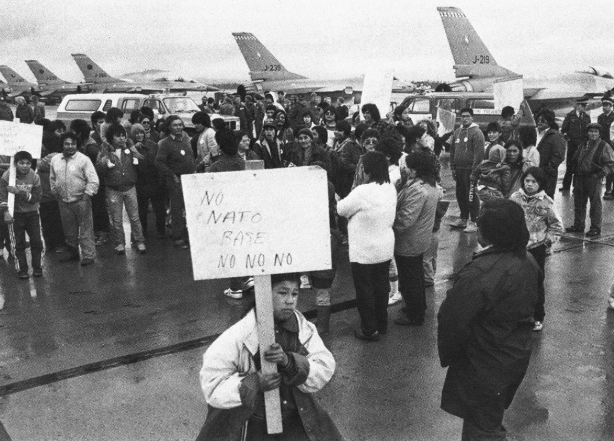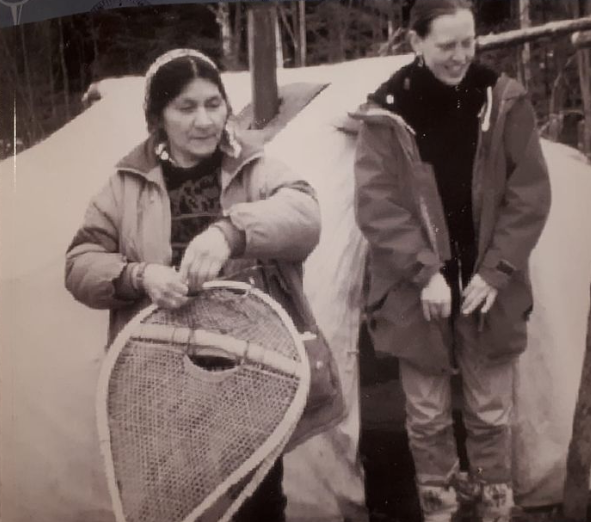Article by PBI-Canada

Photo: A protest at the Goose Bay air force base in 1988 in opposition to NATO low level flight training over Nitassinan.
Low level flight training can involve military aircraft flying as low as 100 feet above terrain level and dropping non-explosive practice bombs on a target range.
Flight training over Nitassinan, the ancestral homeland of the Innu, began in the 1950s with the Royal Air Force flying out of Goose Bay, Labrador.
By 1981, the German Air Force began low level flight training there, followed by the United States and the United Kingdom in 1986, and the Netherlands in 1987.
In 1996, the Multinational Memorandum of Understanding with the UK, Germany and the Netherlands was renewed for a 10-year period that allowed for up to 15,000 low level and 3,000 medium/high level training flights annually.
Italy signed the memorandum in 2000.
These military training operations happened despite opposition from the Innu.
Innu Elder Tshuakuesh Elizabeth Penashue has stated: “Canada sees our land as uninhabited land. It is inhabited by the Innu, and it is inhabited by wildlife. This is hunting territory, nomadic territory. It is not for war games.”
Penashue has also noted: “Innu women never used to go out to meetings, but it was time to wake up and do something to stop the destruction caused by low-level flying and weapons testing. …I went to the bombing range with other activists. We put tents on the base to protest. We were jailed many times, in Goose Bay and Stephenville. We walked from Toronto to Ottawa and they put us in jail there, too… I went to Europe twice to speak.”
And she has remarked: “When we go on the base, even when we are close to the jets, none of our children or elders go up to smash the jets. We never do that…. We tell the children, don’t touch anything. Don’t break anything. Don’t be rude.”
In October 1994, the Peace Brigades International-North America Project commented: “A continuing issue for the Innu of both Labrador and Quebec is low-level flight training over their hunting territory by Canada and other NATO countries.”
PBI-NAP highlighted: “The training began without any prior consultation with the Innu.”
By March 1995, PBI-NAP noted that an Environmental Assessment Panel that had chosen to proceed with hearings, despite the decision of the Innu to boycott the process, and while “admitting their data was inadequate for determining the environmental impacts of the flights, had nevertheless approved [continued low level flight training].”
It wasn’t until 2005 that the 50+ years of low-level flying operations by NATO member countries over Nitassinan finally ended.
Photo: Innu Elder Tshuakuesh Elizabeth Penashue and Peace Brigades International-North America Project activist Anne Harrison in 1995.


